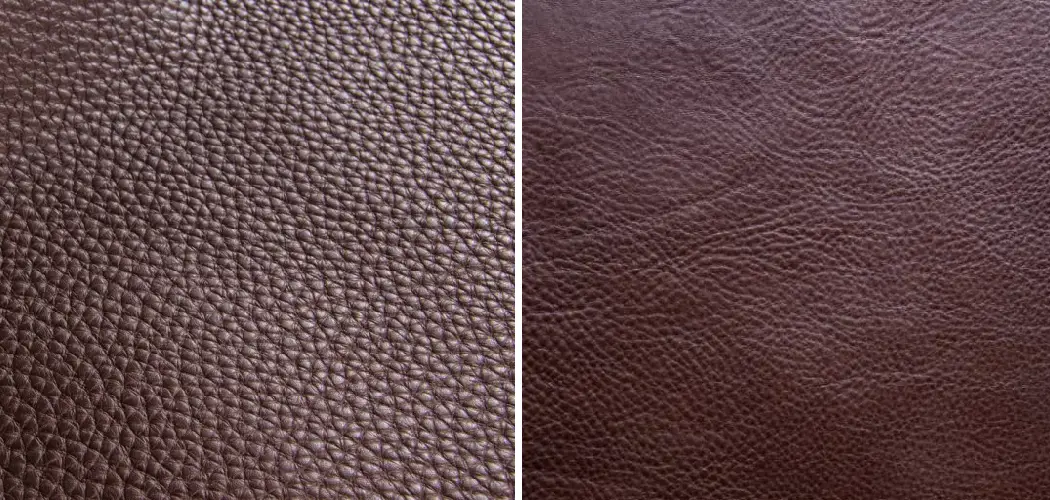Do you want to buy a leather item but don’t know the difference between full grain and other types of leather? Understanding what makes up full grain leather can be confusing, especially when faced with different terms like embossed grain or corrected grain.
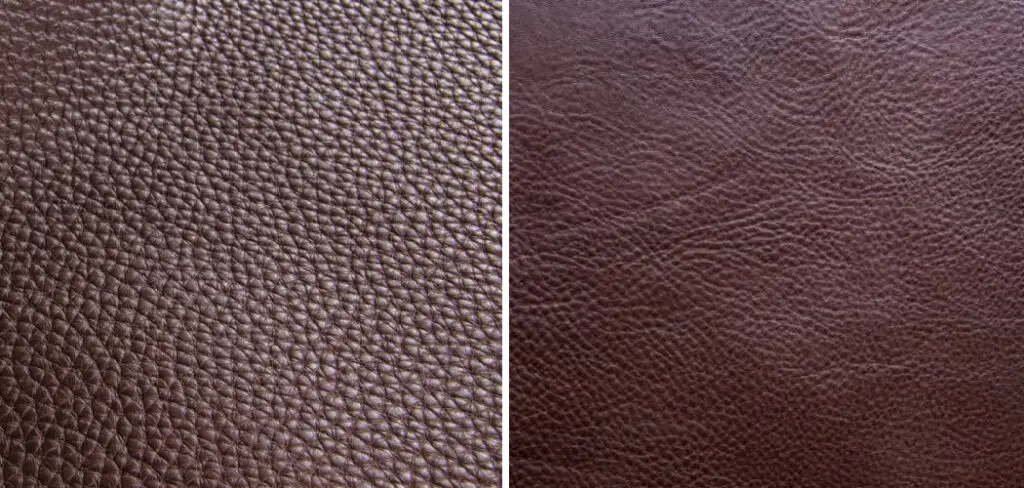
Fortunately, we are here to demystify this topic by providing an easy-to-understand explanation of how to identify full grain leather and why it is often preferable over its counterparts. Read on for more information!
When it comes to leather, the quality and longevity can depend on two main variables: the kind of leather used and how it was tanned. The highest quality of leather is full grain leather. That’s why its so important for buyers to be able to identify when they are purchasing true “full grain” as opposed to imitation or fake materials that will not stand the test of time.
Here, we’ll dive into the ins and outs of differentiating between full grain and lower grade leather, so you can make an informed decision when shopping for your next purchase!
Benefits of Full Grain Leather
1. Durability
Full-grain leather is one of the most durable materials. It offers superior strength, resilience, and longevity when compared to other types of leather. This is also the reason why it is used in a variety of products, from shoes and bags to furniture and clothing.
2. Style
The look and feel of full-grain leather are among its most attractive qualities. Its surface has visible grain patterns that have natural variations from one piece to another. This adds character and uniqueness to your possessions that cannot be replicated with synthetic materials.
3. Comfort
Full-grain leather is naturally breathable and becomes softer over time. Due to its non-porous surface, it has less tendency to absorb sweat or other liquids that can irritate the skin. As a result, you will feel comfortable wearing full-grain leather shoes or carrying an accessory made out of this material.
4. Easy to Care For
Full-grain leather is relatively easy to care for with minimal effort and time. All you need to do is clean it with a damp cloth when needed and condition it regularly in order to maintain its luster and beauty. With proper maintenance, your full-grain leather items will last a lifetime!

5. Eco-Friendly
Full-grain leather is an eco-friendly material because it is a byproduct of the food industry. The tanning process uses less energy compared to other materials and does not require any synthetic chemicals, making it a more sustainable choice for your wardrobe and home furnishings.
By investing in full-grain leather, you are not only ensuring your comfort but also protecting the environment. With its superior properties and classic look, full-grain leather is a timeless material that will stand the test of time.
Why May You Want to Identify Full Grain Leather?
1. To Make Sure the Best Quality Leather
Full grain is the highest quality grade of leather, meaning it has not been buffed or sanded to remove any imperfections. This makes for a more durable product that can stand up to regular wear and tear. Also, it contains all of the natural grain, giving it a unique and luxurious appearance.
2. To Ensure It is Not Low-Quality Imitation Leather
Full-grain leather stands out from other lower-quality materials like faux or bonded leather. Bonded leather is made up of scraps that are glued together, while faux or imitation leather is a synthetic material.
3. To Know the Product is Authentic
Full-grain leather products are often more expensive than other types of leather, so it’s important to make sure you’re paying for the real thing. Knowing how to identify full grain leather can help you ensure that you’re getting a genuine product and not a low-quality alternative.
The Following Are 10 Ways to How to Identify Full Grain Leather
1. Feel the Leather
Full-grain leather should feel smooth and supple, with a slightly oily finish that helps protect against moisture and dirt. If the material feels thicker or stiffer, it is likely an imitation or bonded leather product instead of full grain.
2. Look for Grain Patterns
Full-grain leather will have visible grain patterns, giving it a distinct look and texture. This is because the material has not been buffed or sanded to remove any imperfections, which gives it its unique appearance. If there are no visible grain patterns, this means that the leather is not full grain.
3. Check for Natural Markings
Full-grain leather has natural markings like scars, wrinkles, insect bites, and more that give it its character and charm. These marks are not present in low-grade alternatives like faux or bonded leather. If you find any of these markings on a product, chances are it is genuine full grain leather.
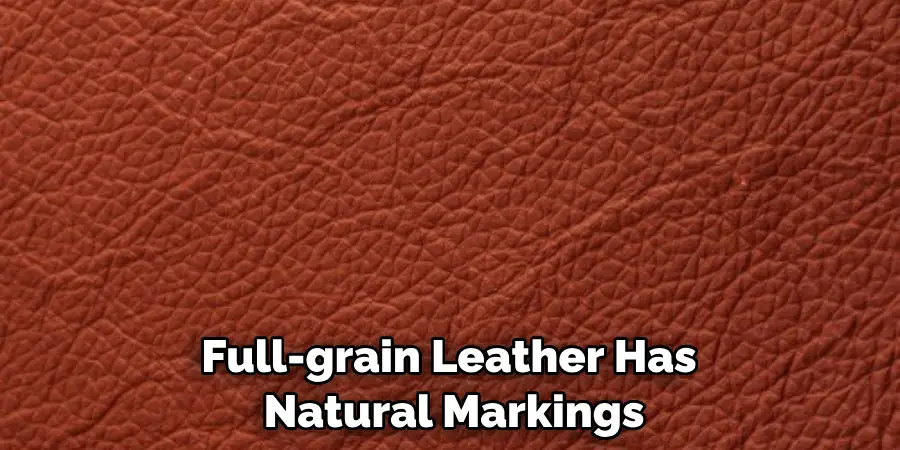
4. Smell the Leather
Full-grain leather has a slight smell to it, which is not present in lower quality alternatives like bonded or faux leather. If you notice a pleasant and unique aroma coming from the product, there’s a good chance it is genuine full grain leather.
5. Inspect the Edges
The edges of full-grain leather products will be slightly rough, whereas the edges of lower quality materials like bonded or faux leather will be smooth and perfect. If you notice that the edges are not rough or frayed in any way, this indicates that it is not full grain leather.
6. Examine the Stitching
Full-grain leather products are usually hand-stitched with thick thread, whereas lower quality materials will be machine-stitched with thin thread. If the stitching on a product looks too perfect or uniform, it is likely not genuine full grain leather.
7. Look for Oxidation
Full-grain leather will oxidize over time, which is a process where the leather darkens and develops a patina. Lower-quality materials like bonded or faux leather do not oxidise, so if you notice any oxidation on the product it is likely full grain leather.
8. Check for Pores
Full-grain leather has natural pores located throughout the material, which are not present in lower-quality materials like faux or bonded leather. If you notice any visible pores on the product, chances are it is genuine full-grain leather.
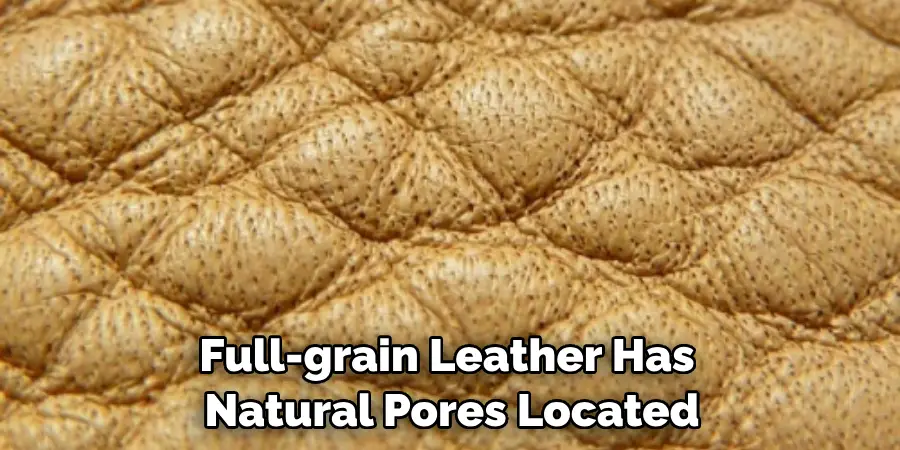
9. Search for Brand Labels or Tags
Many companies that produce high-quality full grain leather products will include a label or tag to indicate that their product is genuine. If the product has a label or tag that indicates it is made of full-grain leather, then you know that it is indeed genuine.
10. Check for the Price
Full-grain leather products are often more expensive than other types of leather as they are of higher quality. So if you come across a product that is relatively cheap, then chances are it is not genuine full grain leather.
By using these 10 tips, you can be sure that the product you’re buying is authentic and made from full-grain leather. Knowing how to identify full grain leather can help you ensure that you’re getting a quality product that will last for years to come.
Frequently Asked Questions
What Precautions Should I Take Before Purchasing Full Grain Leather?
When purchasing full grain leather, it is important to check the quality of the product before buying. You should look for any signs of damage, such as cracks or discoloration, that could indicate poor craftsmanship. Additionally, make sure to inspect the seams and stitching carefully to ensure they are strong and well-constructed.
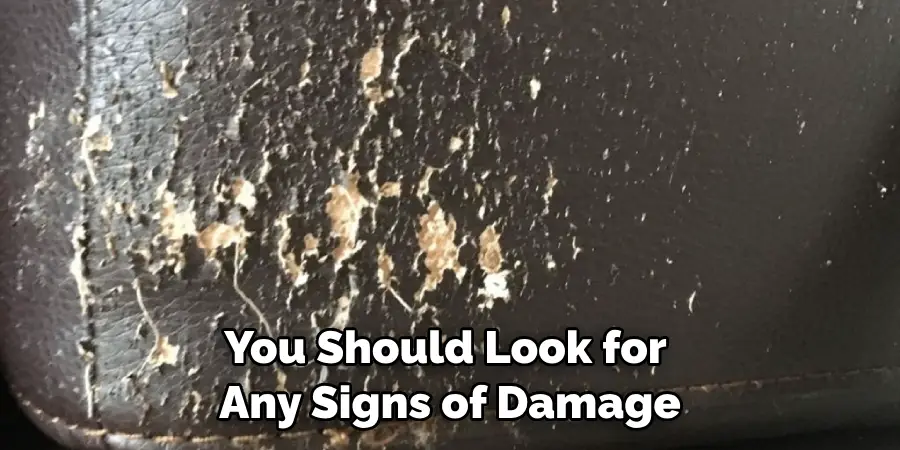
You should also sniff the leather for any unpleasant odors, as this could be a sign of poor quality. Lastly, it’s important to ensure that the product is not made with synthetic materials, as these will not provide you with the same quality of full grain leather.
What Steps Can I Take to Maintain the Quality of My Full Grain Leather?
To maintain the quality of your full grain leather, it’s important to take steps to protect it from everyday wear and tear. Make sure that you keep the item away from direct sunlight, heat sources, and humid environments, as these can all cause damage over time.
Additionally, it’s important to condition the leather regularly with a cleaner and protectant. This will help keep your leather looking like new for many years. Lastly, make sure to keep any spills or dirt off of the leather by wiping them up promptly.
Are There Any Tests I Can Perform To Ensure My Leather Is Full Grain?
Yes, there are a few tests you can perform to ensure your leather is full grain. One test involves rubbing the surface of the leather with your finger. If it feels soft and supple, then it is likely full grain leather. Additionally, you can try scratching or pressing the material.
Full-grain leather should be resistant to scratches and indentations, whereas lower-quality leather will be more prone to damage. Finally, you can try stretching the leather. If it stretches easily and returns back to its original shape, then it is full grain.
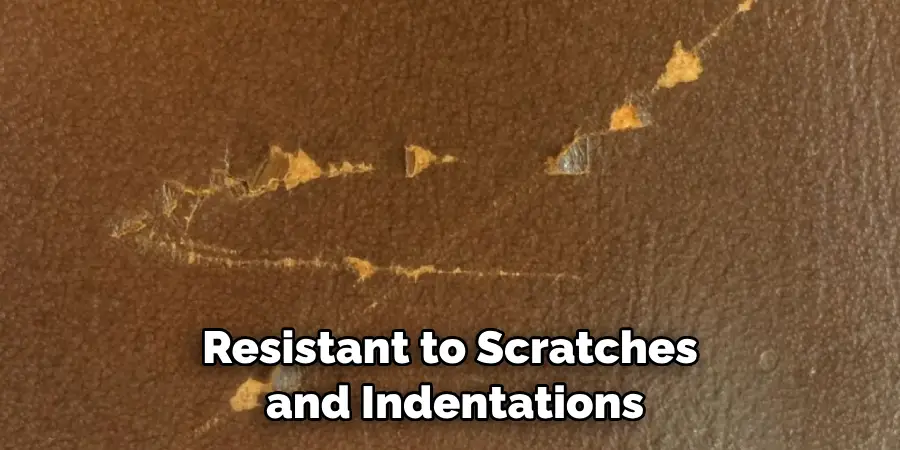
Can I Tell the Difference Between Full Grain and Top-Grain Leather?
Yes, it is possible to tell the difference between full grain and top-grain leather. Full grain leather has not been sanded or buffed to remove any imperfections, so it will have a very natural look with small bumps and ridges along its surface.
On the other hand, top-grain leather has been sanded and buffed to remove any imperfections, so it will have a smooth and consistent appearance. Additionally, full grain leather is generally more durable than top-grain leather.
What Are the Benefits of Purchasing Full Grain Leather?
Full grain leather offers several benefits compared to other types of leather. For starters, it is the most durable type of leather and can last for many years with proper care and maintenance.
Additionally, full grain leather has a unique natural look that will keep its shape over time. Lastly, full grain leather is generally more breathable than other types of leather, which makes it more comfortable to wear in warmer climates.
How Much Should I Expect to Pay for Full Grain Leather?
The price of full grain leather can vary depending on the type and quality of the material. Generally, you should expect to pay more for higher-quality leather, as it will be more durable and last longer. On average, full grain leather will range anywhere from $50-$500 per square foot, so it’s important to shop around and compare prices before making a purchase.
Can I Reupholster My Furniture With Full Grain Leather?
Yes, it is possible to reupholster furniture with full grain leather. It’s important to make sure that the existing frame of the furniture is strong enough to support the weight of the leather. Additionally, you will need a professional upholsterer to properly install the leather. Finally, make sure that you choose a full-grain leather that is of high quality and will last for many years.
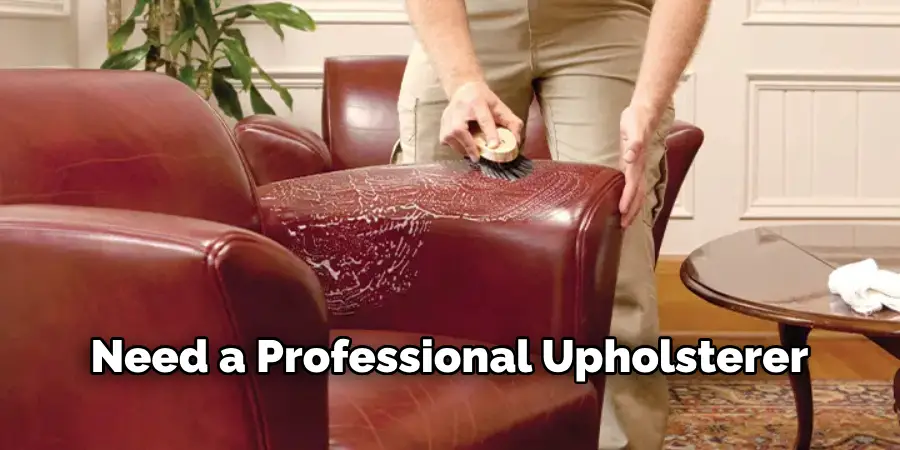
These are just a few of the benefits that full grain leather can offer. Ultimately, it’s important to remember that quality will vary depending on the manufacturer and you should take steps to ensure you’re getting the best product for your money.
Conclusion
Now you know how to identify full grain leather! If you are in the market for leather goods, it is important to familiarize yourself with identifying full grain leather. Doing so can help you make sure that you purchase quality items that will last for years to come. To recognize full grain leather, inspect the surface of the product and examine its texture and thickness.
Additionally, remember to look at how soft or stiff the material is, as well as check for any blemishes such as stretch marks, white marks or pellets from insect bites.
With this knowledge in hand, you’ll be well on your way to ensuring you purchase full grain leather. Ultimately, by investing in a higher-quality leather product now, you are saving yourself money in the long run due to its durability and longevity. Investing in quality is always worth it!

